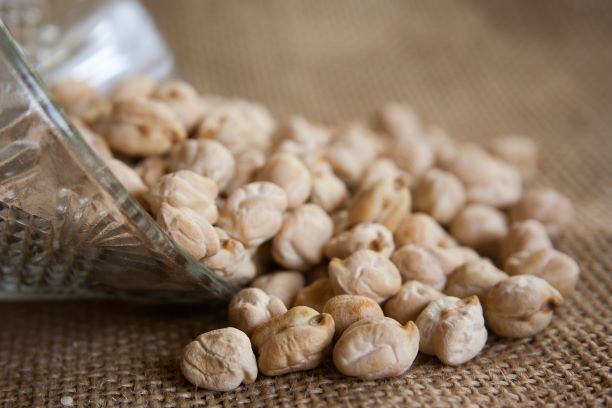Hummus might look beige and boring in the bowl, but this blend of soft chickpeas, olive oil, tahini, lemon juice, and garlic creates a dip that is so much more than the sum of its parts.
Hummus is a very popular and traditional Middle Eastern food. It is great as an accompaniment to a meal or as a dip. It is traditionally made with chickpeas, tahini, lemon juice, and olive oil.
Be the Chef
Making it yourself is so easy and will be far tastier than just about anything from the deli section (PSST, there’s also no need for preservatives). You can make about three times the amount of hummus for the price of one store-bought tub. All you need is a food processor or blender.
Hummus made from chickpeas that you cook yourself is superb. If you have the time and inclination, I encourage you to try it. You will need 1 cup of dried chickpeas. If you love super smooth hummus, it’s also worth taking the time to pinch the skins from each chickpea. This is a time-consuming endeavor; however, the hummus is smooth as silk.
Tips
Tahini is a traditional and important part of the hummus recipe and cannot be substituted. However, it can be omitted. Tahini is one ingredient you might not have in your pantry. Stored in the fridge, a big jar of tahini will last for quite some time, so you don’t have to worry about using it up right away. Along with hummus, tahini is also fantastic in salad dressings, sauces for grilled foods, and as a spread on sandwiches.
Keep in mind that all ingredients are “to taste” when making hummus. The key to great hummus is to taste it often and adjust the flavors as desired. Play around with the proportions, add some spices, and make this recipe your own. Experimenting with flavors is not tricky as long as you have mastered a basic hummus. There are endless variations on traditional hummus – add roasted bell peppers, spinach, or olives to make your own creative flavors.
Don’t Skimp
Since there aren’t too many ingredients, each needs to be high quality. Skimping on even one ingredient will result in a subpar final product. That means using fresh lemon juice and garlic (no jarred or bottled stuff!), extra-virgin olive oil, and a flavorful tahini. The best is found in Middle Eastern markets, but a national brand works, too. That brings us to the last, most important ingredient of all…chickpeas. Use dried chickpeas. Soaking the chickpeas overnight and cooking them from scratch makes them super soft, which is essential for a creamy hummus. They will mash easily with your thumb. Canned chickpeas are firmer.

Traditional hummus is made from chickpeas without skins to create a smoother consistency. It seems like a lot of work, but there is a secret to make it much easier: baking soda. Adding a pinch to the soaking chickpeas and again while they cook will help loosen the skins. The magic happens because the alkalinity of the baking soda prompts a chemical reaction that causes the skin to start to dissolve. Once the chickpeas are done cooking, plunge them straight into an ice bath. The skins will rise to the top, and you simply strain them off. Anything remaining can be easily removed with your fingers.
Lay on the Tahini
Be generous with the tahini. Authentic hummus has more tahini than most American hummus. For one cup of chickpeas, use ¾ cup tahini for a super nutty taste and velvety texture.
Layer Correctly
Rather than mixing all the ingredients at once, start with the tahini, garlic, lemon juice, salt, and a little bit of water. This will add extra air, making it lighter and creamier. Once you’ve made the tahini mixture, add the chickpeas. While it’s processing, add another splash of water to whip in even more air and make the dip extra light, fluffy, and heavenly.
The majority of American hummus recipes call for blending in olive oil, which makes the hummus creamier and also gives it a dip-like consistency. Even so, in traditional recipes, that’s what the tahini and water are for. Once you’ve transferred the hummus to a bowl, top it with a drizzle of fruity extra-virgin olive oil plus a dusting of paprika for a touch of color. Yes, it’ll be ruined in seconds as you dive in, but the pretty presentation makes the food taste all the better.
Ready to give it a go? Try this hummus recipe.
Written by Vicki Hayman, MS, University of Wyoming Extension Nutrition and Food Safety Educator